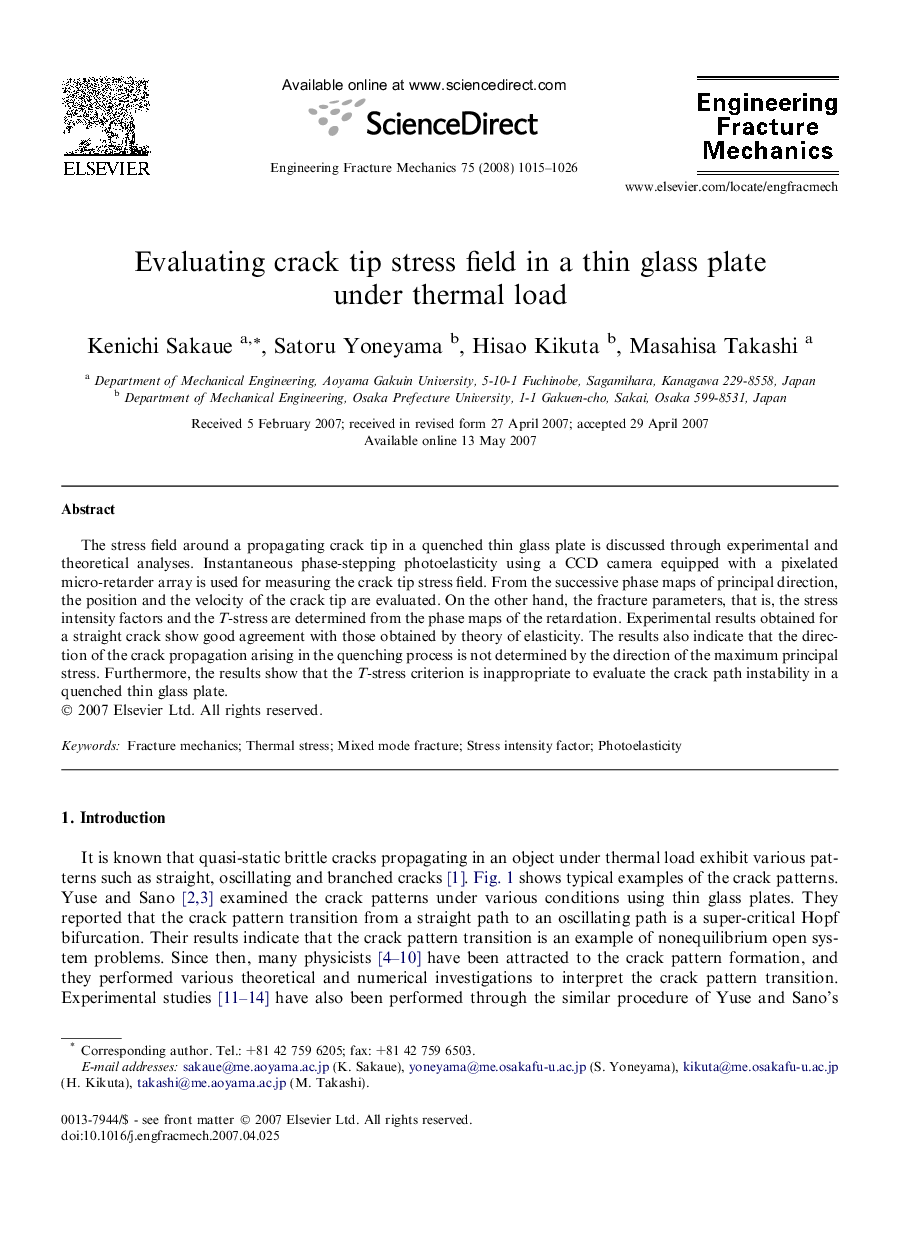| کد مقاله | کد نشریه | سال انتشار | مقاله انگلیسی | نسخه تمام متن |
|---|---|---|---|---|
| 771914 | 897672 | 2008 | 12 صفحه PDF | دانلود رایگان |

The stress field around a propagating crack tip in a quenched thin glass plate is discussed through experimental and theoretical analyses. Instantaneous phase-stepping photoelasticity using a CCD camera equipped with a pixelated micro-retarder array is used for measuring the crack tip stress field. From the successive phase maps of principal direction, the position and the velocity of the crack tip are evaluated. On the other hand, the fracture parameters, that is, the stress intensity factors and the T-stress are determined from the phase maps of the retardation. Experimental results obtained for a straight crack show good agreement with those obtained by theory of elasticity. The results also indicate that the direction of the crack propagation arising in the quenching process is not determined by the direction of the maximum principal stress. Furthermore, the results show that the T-stress criterion is inappropriate to evaluate the crack path instability in a quenched thin glass plate.
Journal: Engineering Fracture Mechanics - Volume 75, Issue 5, March 2008, Pages 1015–1026